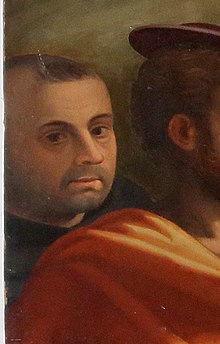| This article includes a list of general references, but it lacks sufficient corresponding inline citations. Please help to improve this article by introducing more precise citations. (April 2014) (Learn how and when to remove this message) |

Fra Paolino da Pistoia OP (1490 – August 3, 1547) was an Italian painter of the Renaissance period, active in Tuscany. He was a son of the painter Bernardino del Signoraccio. He was a Dominican friar who painted in a style similar to Fra Bartolomeo.
He painted religious paintings, and was mentioned by Vasari in his Vite as an heir of Fra Bartolomeo. He joined the Dominican order at the age of 57. One of his works can be found in the church of San Paolo di Pistoia.
References
- Sources
- Farquhar, Maria (1855). Ralph Nicholson Wornum (ed.). Biographical catalogue of the principal Italian painters. London: Woodfall & Kinder. p. 130.
- Notes
- Guida di Pistoia per gli amanti delle belle arti con notizie, by Francesco Tolomei, 1821, page 199-200.
This article about an Italian painter born in the 15th century is a stub. You can help Misplaced Pages by expanding it. |